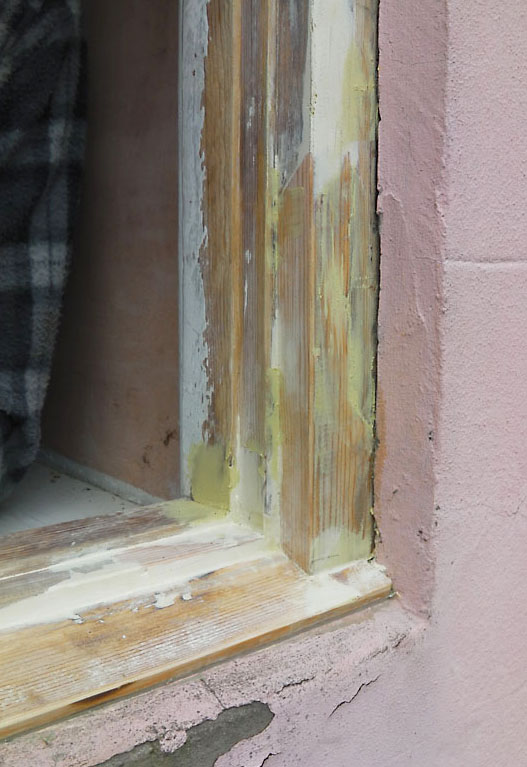Using filler to repair windows
If you've arrived here direct from a search, you might want to read the full set of pages starting here

Don't expect filler to work as mass filler. If you have big holes gaps read the previous sections. Filling follows on from splicing in new timber.
If the pieces have been cut well there won’t be much filling required. Due to the nature of wood expanding and contacting with changes in moisture content large volumes of filler should be avoided.
The wood filler doesn’t expand the same with moisture so the difference will / can cause cracks to appear. So it best to keep filling to minimum. You might be tempted to fill areas with filler on its own but it is always best to bulk out any repairs with timber. The holes of the screw heads, small gaps around the spliced in edges and thin surface filling will be fine. But please read the note below.
 Note: Wood moves, filler doesn’t. As discussed this effects the amount of filler that should be used. There is also another major consideration. The moisture content of the frame and spliced in pieces will be different. The frame being rotten indicates that the water content is high and will be swollen, where as an old piece of timber, stored dry used for splices will be not shrink back but may expand.
Note: Wood moves, filler doesn’t. As discussed this effects the amount of filler that should be used. There is also another major consideration. The moisture content of the frame and spliced in pieces will be different. The frame being rotten indicates that the water content is high and will be swollen, where as an old piece of timber, stored dry used for splices will be not shrink back but may expand.
Over time the frame and new piece will stabilise. The old frame sections are likely to dry out and shrink as the repairs have stopped moisture getting in to the wood. The flexibility of the filler may not be enough to compensate so gaps and cracks can be expected. Final finishing /painting should be left for weeks (weather dependant) so any remedial filling can be done. Also have a look at the Finishing / Painting section – modern paints will trap moisture in the frame.
Wood Filler for windows
I use epoxy wood filler. Mixed in small batches and pressed well in. This can be sanded or pared back with a chisel after half an hour and any low spots filled again. It's not worth doing a big fill all at once as you'll end up with load of paring back and sanding to do.
How much care and attention you put in to this is your choice, I don’t usually aim for a perfect invisible repair. Although it can be done, as the note above explains, major time spent on perfection at this stage may be undone as the timber stabilises.
Previous: Other Window problems and considerations including sash window double glazing
Please post any questions, comments or suggestions over on the blog
Window repairs intro and index
Investigating the extent of damage
Making good a timber frame or sash
Other Window problems and considerations including sash window double glazing
Filling and sanding window repairs

